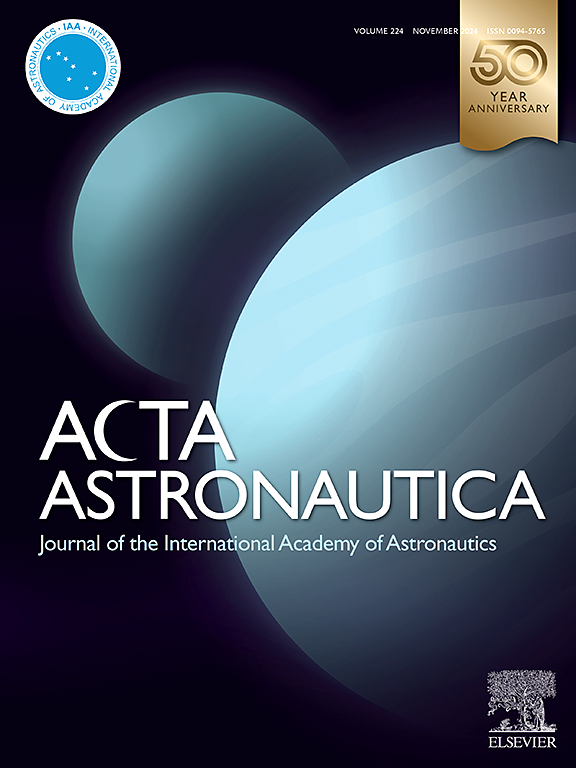Helix orbit deployment of nanosatellites for formation flight
IF 3.1
2区 物理与天体物理
Q1 ENGINEERING, AEROSPACE
引用次数: 0
Abstract
This study aimed to deploy two nanosatellites from Technische Universität Berlin, within the scope of the NanoFF mission, directly into a helix orbit using currently available technology to minimize collision risk post-deployment. The methodology involved using D-Orbit’s ION orbital transfer vehicle, launched aboard SpaceX’s Falcon 9 launcher, for the precise deployment of the NanoFF satellites. The planned deployments with ION, equipped with capabilities for multiple satellite deployments, faced operational constraints such as concerns from SpaceX impacting the timing of the second deployment, and the inability to deploy near the North Pole due to attitude accuracy concerns. Deployment vectors were carefully planned and adjusted for both deployments to minimize collision risk. In-orbit data from ION and the NanoFF satellites, including Global Navigation Satellite System data and Two-Line-Elements, were analyzed to compare the estimated versus requested deployment vectors. The results were analyzed to check discrepancies, discuss lessons learned, and suggest improvements in deployment strategies to enhance future formation flying missions.
纳米卫星编队飞行的螺旋轨道部署
这项研究的目的是在NanoFF任务范围内,利用现有技术将Technische Universität Berlin的两颗纳米卫星直接部署到螺旋轨道上,以最大限度地减少部署后的碰撞风险。该方法涉及使用D-Orbit的ION轨道转移飞行器,该飞行器由SpaceX的猎鹰9号发射器发射,用于精确部署NanoFF卫星。ION的计划部署配备了多颗卫星部署的能力,面临着操作限制,例如SpaceX对第二次部署时间的担忧,以及由于姿态精度问题而无法在北极附近部署。部署矢量经过仔细规划和调整,以最大限度地降低碰撞风险。分析了来自ION和NanoFF卫星的在轨数据,包括全球导航卫星系统数据和双线元,以比较估计和要求的部署矢量。对结果进行分析,以检查差异,讨论经验教训,并提出改进部署策略的建议,以增强未来的编队飞行任务。
本文章由计算机程序翻译,如有差异,请以英文原文为准。
求助全文
约1分钟内获得全文
求助全文
来源期刊

Acta Astronautica
工程技术-工程:宇航
CiteScore
7.20
自引率
22.90%
发文量
599
审稿时长
53 days
期刊介绍:
Acta Astronautica is sponsored by the International Academy of Astronautics. Content is based on original contributions in all fields of basic, engineering, life and social space sciences and of space technology related to:
The peaceful scientific exploration of space,
Its exploitation for human welfare and progress,
Conception, design, development and operation of space-borne and Earth-based systems,
In addition to regular issues, the journal publishes selected proceedings of the annual International Astronautical Congress (IAC), transactions of the IAA and special issues on topics of current interest, such as microgravity, space station technology, geostationary orbits, and space economics. Other subject areas include satellite technology, space transportation and communications, space energy, power and propulsion, astrodynamics, extraterrestrial intelligence and Earth observations.
 求助内容:
求助内容: 应助结果提醒方式:
应助结果提醒方式:


